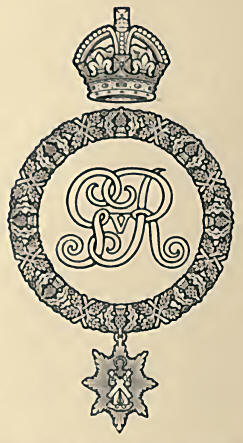|
The title of this book, The Story of The Royal
Scots, indicates its scope and purpose. It does not pretend to take the
place of the Regimental Records of The Royal Scots, a portly volume of which
a limited edition has been prepared by a Committee of the Regiment for issue
to subscribers only. If any reader would know such details as the names of
officers written in the Blenheim Bounty Roll, or by how many men the
regiment was augmented in 1734, or the state of the colours and
accoutrements in 1830, he must betake himself to the Records. I have passed
such matters by. Important as they may be to the student of regimental
development, they have little human significance. A regiment such as The
Royal Scots is a continuing entity, made up indeed of so many officers and
men, but presenting itself to the world as a fighting unit which has dyed
its name on the Roll of History in pursuit of its proper business of war.
It is therefore as a fighting regiment that it appears in the
following pages, crowned with the glories of long and arduous services given
wherever the country needed them. No one will forget that it is during times
of peace that the army fits itself for its great function, but they are
times of preparation rather than of achievement. It is, however, on the
field of battle that the strong spirit of the fighting Scot has moved the
First or Royal Regiment of Foot to achieve so much for its own undying
honour and for the safety of the Kingdom and Empire.
The writer of a recent military book has referred to The
Black Watch as “Scotland’s oldest and best beloved regiment." This is
characteristic of the prevailing ignorance. which regards no regiment as
Scottish unless it wears the kilt. Splendid as are the records of the Black
Watch, the oldest of the Highland regiments, it was not in being as a unit
of the British army until nearly eighty years after Charles II bestowed the
title of Royal on his First Regiment of Foot, or until more than a century
after The Royal Scots were constituted a British regiment by warrant of
Charles I.
With the single exception of another Lowland regiment, the
Royal Scots Fusiliers (Twenty-first) raised in 1678, The Royal Scots was the
only regiment of North Britons to fight in the British1 service during the
wars of William III and the Marlborough campaigns.
So it happens that the story of The Royal Scots covers a
wider field of British military history than that of any other regiment, the
Guards not excepted. I must here make warm acknowledgment to the Regimental
Committee, which has not only placed at my disposal the literary matter of
the Records, which include much new material, but also permits me to
reproduce many illustrations from rare prints, drawings by Mr. J. C. Leask,
etc. To Captain McCance I owe an especial debt for much help and counsel,
for reading my proofs and making many helpful suggestions.
Without the assistance which many officers at the Front and
at home have given in preparing the chapters on the present war I could not
have attempted writing them, and I owe thanks to so many that I may be
pardoned omitting the long list of their names. I shall be grateful for
further information, so that when we are once more at peace I may attempt a
complete narrative.
Mr. Campbell Smith, who has worked so strenuously on behalf
of all Lowland causes and for The Royal Scots in particular, has also put me
in his lasting debt.
It may be asked why a civilian and a Southerner should
venture to write the story of the oldest Scots regiment. The reasons are, in
the main, two. The book is in some sort a memorial to my gallant kinsman,
Captain Charles Lempriere Price, D.S.O., who distinguished himself so
notably in the South African War and fell fighting in September 1914 at the
Battle of the Aisne. It is also a result of my long delight in reading
Scottish history, and of much writing about the delightful fabric presented
by the building of that history into the walls of Scottish castles.
I make no claim to be a military expert, and have followed
the path of pleasure and safety in relying on the Hon. John Fortescue’s
monumental History of the British Army, Professor Oman’s History of the
Peninsular War, and other standard authorities. Regimental histories in
plenty have been written since Richard Cannon brought out his long row of
volumes in the eighteen-forties. Most of them are over-charged with details
of no interest to any but the military expert, and few of them endeavour to
connect the life of the regiments with the political history of the country.
The idea at which I have aimed has been to show The Royal Scots moving
gallantly in the pageant of the war story of Great Britain during three
centuries. The series of which this volume forms a part is designed to
satisfy the grateful interest which the country feels in the history of the
great military units, by whose efforts, under God and the British Navy, our
shores have been kept inviolate and the Empire built on foundations of
honour and liberty.
Lawrence Weaver.
Reform Club,
Pall Mall.

The Badge of the Royal Scots.
Since 1881 it has been the custom of the regiment to use the
Glengarry cap badge as a device for note-paper, etc., but for more than a
century the correct badge has appeared on the colours, "The Royal Cypher
within the Collar of the Order of the Thistle with the Badge appendant,” as
figured above. |

